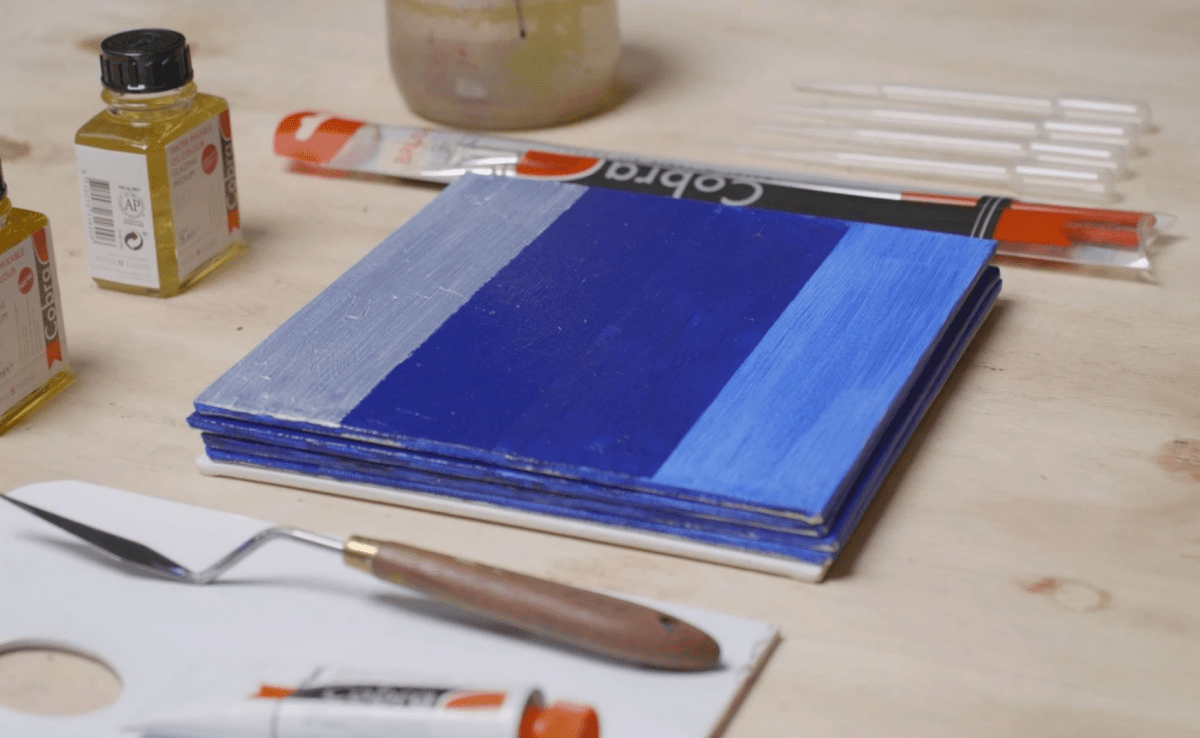Building up a Cobra oil painting
If you want to build up a painting in multiple layers, the same rules apply as with other oil paints: the "fat over lean" method. You build your painting from lean to increasingly fat. You should only apply the next layer once the previous one is dry to the touch and no longer dissolves.
Preparing the canvas
When you buy a canvas, it is usually already universally primed with one layer of natural glue and two layers of gesso. This high-quality primer prevents oil from penetrating and ensures excellent adhesion. This means you can start painting straight away.
The first layer: lean
The first layer of your painting must be thinner or leaner than the following ones. As it dries, it forms a porous rather than a compact film. Traditional oil paints use white spirit or turpentine to make the paint leaner. Cobra, however, uses water. The more water you add, the leaner the paint becomes. So you can choose to apply the first layer using Cobra paint mixed with water.
The second layer: fatter
Once the first layer is dry to the touch, you can apply a second layer. This must be fatter than the previous one. The oil in the new layer is absorbed by the leaner underlayer and adheres to the many pores formed during drying. This ensures good adhesion between the layers. An example of a fatter layer is pure Cobra oil paint.
The third layer and beyond
After the second layer has dried, you may choose to apply another layer. This should again be fatter. You can use a Cobra painting medium for this. The medium also makes the paint smoother, more transparent, and reduces visible brushstrokes compared to pure oil paint.
Glazing
For an additional layer, such as a glazing layer, you can use a glazing medium. This contains oil and resin, but with a higher oil content, making it fatter. That’s why glazing dries a bit more slowly. You can apply it in the same way as a painting medium.
Key rule
You can build up your painting in many or few layers. Whatever you choose, always follow the fat over lean rule.







